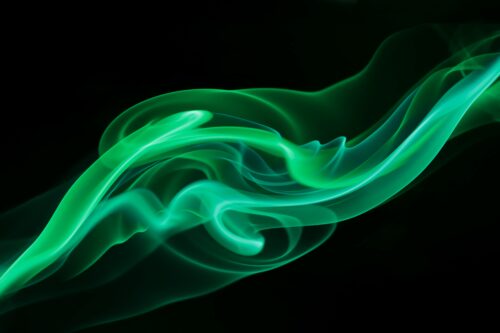Image courtesy of Futurity.
What lies within an odor plume? For humans, a fleeting smell of something, perhaps accompanied by a flash of color. The plume is barely discernible, and there are mere seconds before it dissolves into indetectable wisps. But for flies, odor plumes contain a fountain of information that help them navigate the world.
It has long been thought that flies use the wind as their primary directional cue when navigating turbulent odor plumes to identify the source of the scent. This theory has led to a widely recognized insect odor navigation model known as odor-elicited upwind motion, where flies use the direction of the wind to orient themselves upwind and move in their desired direction. However, Nirag Kadakia and his colleagues in the Emonet and Clark Labs at Yale University have found that these flies are able to determine the direction of the odor itself. Kadakia combined his experience in mathematical modeling with his interest in the experimental work at the Emonet Lab to study this insect olfactory model. “Olfaction is key for insects,” Kadakia said. “It’s their primary sense of finding food, finding potential mates, and fighting competitors.” In his research, Kadakia characterized what navigational algorithms these insects use to maneuver through their environments. “This is a tricky problem because odor landscapes are very complex,” Kadakia said. Odor scenes, as they are also known, are not continuous, but instead appear in bursts with periods of clean air in between. So, how do insects work around the complexities of these landscapes?
To find out, Kadakia and his colleagues used optogenetic stimulation on genetically engineered blind flies. Essentially, they used light as a fictive odor—a fake stimulus—to make light behave as an odor signal, allowing the presence of wind to be eliminated as a variable. The flies were genetically blinded to ensure that they did not visually perceive the optical stimulation in any way. “We can deliver very precise ‘odor signals’ on the flies and make the signals move in certain directions,” Kadakia said. What his team found was that flies can sense the direction that the odor moves, and they react to it largely in the same way they would if it were a wind signal. Additionally, they found that the flies not only respond to odor motion cues but that they can sum different motion cues. “It’s possible that the wind can move in one direction and the odors can move in a different direction… Flies are able to combine these directions and go against [their] vector sum,” Kadakia said. Thus, flies are able to respond to the sum of these direction cues to optimize their navigation.
Interestingly, these researchers uncovered a similarity between the odor detection algorithm and the visual detection algorithm. “I think the coolest way we were able to show that was by [using] illusory stimuli,” Kadakia said. These stimuli do not occur in nature, but they do have a motion component that the researchers were able to use to study the parallels between the two systems. “We broke up motion into these statistical properties, and using that we were able to show that [flies] can detect motion using the same algorithm [as the visual system],” Kadakia said. He was also able to manipulate the illusory stimuli to do something else: move opposite to their natural direction. “We can play odor plumes backward to reverse the odor motion,” Kadakia said. This allowed the researchers to study how flies respond when the odor motion has been changed but the rest of the environment, including the wind direction, has remained the same. What they found was that flies had much more trouble getting to the source of the odor in those scenarios. “That’s because they rely on the natural motion of the odor to navigate properly. When that is perturbed, their navigation success is affected,” Kadakia said. While this research has important implications for current models of the olfactory system, it also has a more widespread impact. “Understanding how insects navigate can also help us understand how they spread disease,” Kadakia said.
This research has opened new channels for the world of computation modeling to explore. “I’m hoping the biggest impact will be a deeper understanding of how similar computations can be in olfaction and vision,” Kadakia said. Since so much research has been done on the visual capabilities of flies, it can guide the way for olfactory research going forward. Clearly, there is more to odor plumes than meets the (undiscerning, human) eye.

